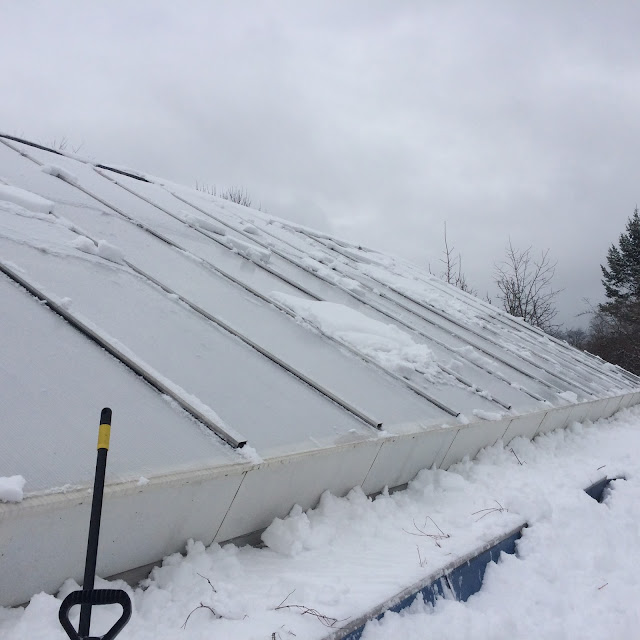For many years I've used thousands of 6 and 8 ounce yoghurt cups and dozens of plastic vacuum-formed seedling trays to grow out seedlings. They work but both are too short (less than 3 inches): roots soon hit the bottom where they wind round and round and tangle. Stretching roots out when transplanting damages them, slowing growth. Though it's easy to remove plants from the separate yoghurt cups, only 24 fit in common flats (10.5" x 21"). Many more plants fit in the seedling trays (72) but it is challenging to remove them one by one without damaging tender roots and stems. A better system would not require removing young plants from their container that would dissolve into the soil.
 |
| Flat with 24 Each 6 or 8 Ounce Yoghurt Containers: They Take Too Much Space! |
 |
| Bottom View: Plastic Seedling Tray with 72 Positions (2.4" Tall) |
 |
| Top View: Seedling Tray |
A sophisticated Japanese system uses paper honeycombs that enable seeds to grow to an appropriate size and then flats are automatically planted very rapidly, with each plant appropriately spaced without removing the paper. But these are suitable for high volume closely spaced salad growers, not for larger plants or flowers. There are also systems for forming paper cups using newspaper but these are typically less than 3 inches tall. I wanted tubes closer to 6 inches tall.
After trying a few diameters and lengths, I settled on paper tubes wrapped around a short length of 1.5 inch PVC pipe (1.625" OD) because three rows of three tubes fit nicely inside tall square plastic flower pots. Eight of these pots, with nine paper tubes in each fit perfectly in a flat, the same number, 72, as the seedling trays. Each tube holds the same amount of growing medium as an eight ounce yoghurt cup but takes up one-third the space.
 |
| White Glue Used to Form Newspaper (5.5" x 7") Into Tubes (Around 1.5" PVC Pipe) |
 |
| Basket and Trug Filled with Paper Tubes |
 |
| Tray Holding Eight Square Plastic Pots That Hold Nine Paper Tubes Each |
 |
| Tube-Filling Process - 50:50 Seed Starting Medium:Composted Manure |
 |
| Seed Sprouting Operation |
 |
| Planting Tomato Seedlings: One Per Tube |
 |
| Flat Transport System to Greenhouse |
 |
| Paper Tube Growing Experiments: Five Types of Onions, Cabbages, Flowers and Tomatoes |
 |
| Peppers Growing in Yoghurt Cups |
 |
| Above: Flowers Growing in Various Shallow Cups; Below: Lettuce and Parsley |
If these paper tubes filled with growing medium and a seedling are easy to plant, and the onions, cabbage and tomatoes grow without hesitation, this new technique will take over the messy yoghurt container system. They have been deteriorating for years and take time to collect, clean and store. The space they take growing limits how many plants we can fit in the greenhouse. We'll be able to fit three times as many using the paper tubes! I can make a few hundred during a typical DVD, fewer if there are subtitles I have to read!























